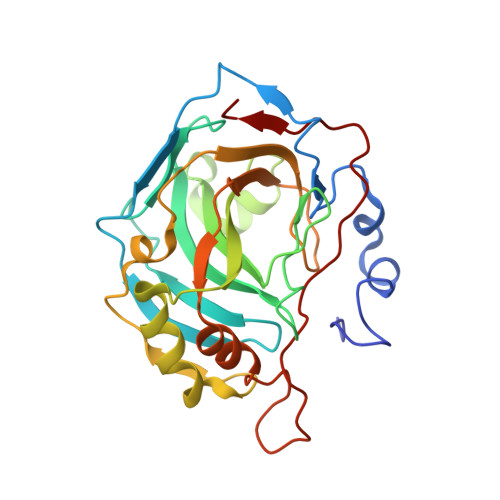Structural elucidation of the hormonal inhibition mechanism of the bile acid cholate on human carbonic anhydrase II.
Boone, C.D., Tu, C., McKenna, R.(2014) Acta Crystallogr D Biol Crystallogr 70: 1758-1763
- PubMed: 24914985
- DOI: https://doi.org/10.1107/S1399004714007457
- Primary Citation of Related Structures:
4N16 - PubMed Abstract:
The carbonic anhydrases (CAs) are a family of mostly zinc metalloenzymes that catalyze the reversible hydration/dehydration of CO2 into bicarbonate and a proton. Human isoform CA II (HCA II) is abundant in the surface epithelial cells of the gastric mucosa, where it serves an important role in cytoprotection through bicarbonate secretion. Physiological inhibition of HCA II via the bile acids contributes to mucosal injury in ulcerogenic conditions. This study details the weak biophysical interactions associated with the binding of a primary bile acid, cholate, to HCA II. The X-ray crystallographic structure determined to 1.54 Å resolution revealed that cholate does not make any direct hydrogen-bond interactions with HCA II, but instead reconfigures the well ordered water network within the active site to promote indirect binding to the enzyme. Structural knowledge of the binding interactions of this nonsulfur-containing inhibitor with HCA II could provide the template design for high-affinity, isoform-specific therapeutic agents for a variety of diseases/pathological states, including cancer, glaucoma, epilepsy and osteoporosis.
Organizational Affiliation:
Department of Biochemistry and Molecular Biology, University of Florida, PO Box 100267, Gainesville, FL 32610, USA.

















